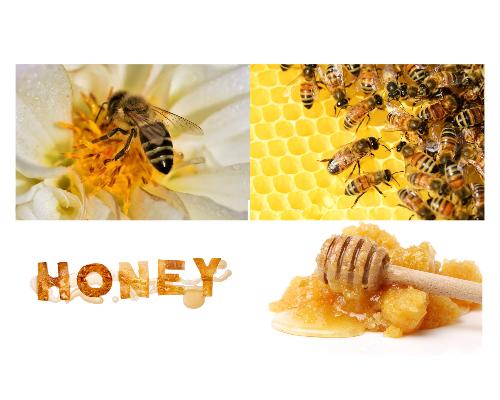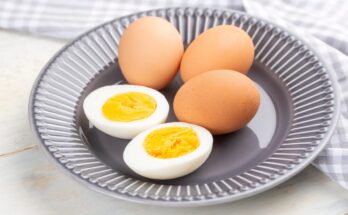Honey is a natural treasure, valued for its sweetness and versatility. It has a semi-translucent appearance, with a light yellowish-brown hue. Its distinct aroma and sweet yet slightly sharp taste make it unique. Over time, honey can turn opaque and develop a crystalline texture. Only bees possess the remarkable ability to produce honeycomb.
The primary sugars found in honey include glucose, fructose, and sucrose. Glucose, the simplest sugar, is found in the blood of living organisms as well as in fruits and vegetables. It helps replenish oxygen lost during fatigue due to lactic acid buildup. Fructose, also known as levulose or grape sugar, crystallizes faster than glucose and plays a role in tissue development. Sucrose is a combination of glucose and fructose. Additionally, honey contains a small amount of dextrin, a starchy fiber that enhances its digestibility.
Honey’s pollen provides a wide array of nutrients, including all 22 amino acids, 28 minerals, 11 enzymes, 14 fatty acids, and 11 carbohydrates. However, the commercial processing of honey, which includes heating, filtering, and bottling, can diminish its nutritional value by removing the beneficial pollen grains. Honey remains an excellent source of energy, primarily due to its carbohydrate content. Its dextrin component allows it to quickly enter the bloodstream, delivering an almost immediate energy boost, making it ideal for those with digestive issues. Honey benefits all organs of the body.
For digestive health, a spoonful of fresh honey mixed with the juice of half a lemon in lukewarm water, taken first thing in the morning, is a natural remedy for constipation and acidity. Additionally, fasting on honey-lemon water has shown promise in helping with weight loss without causing a reduction in energy or appetite.
Nutritional content of honey:
Moisture: 20.0%
Protein: 0.3 g
Minerals: 0.2 g
Carbohydrates: 79.5 g
Calcium: 0.5 mg
Phosphorus: 16 mg
Iron: 0.9 mg
Vitamin C: 4 mg
Trace amounts of Vitamin B Complex.
Crystallization occurs naturally in honey:
Crystallization of honey is a major problem for the beekeepers, manufacturer, and retailer because granulation is considered as adulteration or impurity of honey and is not accepted by the consumers. Some granulation occurs just after extraction of honey, whereas some occurs in the comb when the honey cells are partially capped by the bees as happens in Brassica honey. This makes extraction quite difficult.
Consumers do not understand that honey is a super saturated mixture of sugars. The main sugars in honey are fructose and dextrose. Dextrose has a natural tendency to crystallize, and thus, honey has a natural phenomenon of crystallization. Fructose is more water soluble than glucose. The ratio of fructose and glucose is very important for honey granulation. The honey having high ratio of levulose/dextrose (L: D), crystallizes slowly. Corvia callosa honey has 38.29% levulose and 28.17% dextrose (levulose/dextrose, 1.43) and it never crystallizes. Strobilanthis ixciociphellus honey has this ratio of 1.038 and it crystallizes quickly. But, this ratio do not always give clear indication about crystallization as in Jamun honey, this ratio is 1.10, still it does not crystallizes. Hence other factors besides, levulose dextrose ratio are important in crystallization. In recent times, ratio of dextrose (D) and moisture (M) is considered as right indicator of crystallization.
Pollen, dust and wax pieces also help to crystallization and even the air bubbles increases this process. Granulation can be instant and even. In few types of honey, granulation occurs slowly and these crystals changes to big mass. The honey layer at basal portion crystallizes but the top layer is still liquid and thus it gets fermented.
On heating, the yeast gets destroyed and dextrose changes in solubilize form which slows down the process of crystallization. Crystallization also reduces at low temperature (0-5°C). The ideal temperature for crystallization is 14°C. This information can be very much helpful for beekeepers to decide the temperature range at which they can store honey and thus can save honey from crystallization.
Suggestion for consumers:
Honey can be liquefied by placing in worm water or under the sun.
Storage Instruction: Do not refrigerate. Store in cool, dark, dry, and hygienic place.




